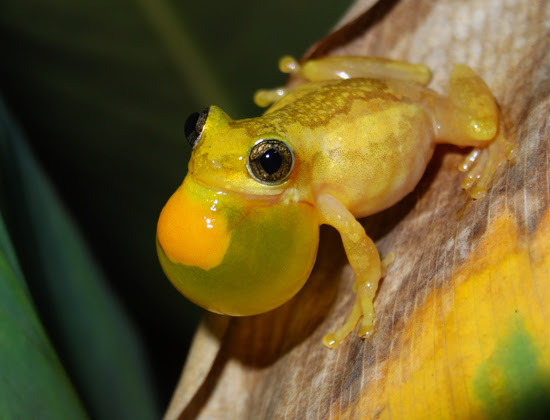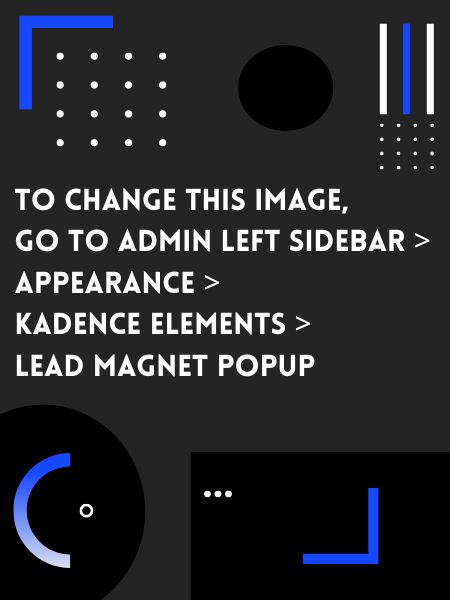Ghana is home to 84 known amphibian species: 78 frogs, 5 toads and a caecilian. Ghana does not have salamanders or newts. With your support, SAVE THE FROGS! Ghana will ensure that every one of these species survives long into the future! Advisory Committee Chairman Michael Starkey was able to see many species of frogs and toads during his time in Ghana. Please learn about what he found!

During my time in Ghana I was fortunate enough to have a few opportunities to go out into the forest in search of amphibians. One night in Kumasi I took a stroll to find amphibians on the campus of Kwame Nkrumah University of Science & Technology (KNUST). The University has a small river that divides the campus and where there is water… there are frogs! I was lured to the calls from frogs like the Afrixalus dorsalis pictured above.

This little frog is called a Puddle Frog, Phrynobatrachus accraensis.

Some frogs were quite big, like this Tiger Frog, Holobatrachus occipitalis. This species is commonly eaten in Ghana. Over-harvesting is a serious threat to amphibian populations and it is driving many species closer to extinction.

Some species were quite small like this Phrynobatrachus calcaratus.

Others were just pure awesome! This is Ptychadena mascareniensis, or better known as the “rocket frog”. Their bodies are amazingly shaped to propel themselves through thick vegetation in order to escape predators. Aerodynamics in action!

This beautiful frog, Afrixalus dorsalis, has an incredibly loud, sharp call.

A gorgeous Afrixalus dorsalis calling.

The same Afrixalus dorsalis male calling.
Toads are quite common in urban areas and can be frequently found looking for food underneath street lights. This species is called the Common African Toad, Amietophrynus regularis.

This Amietophrynus regularis is missing a foot. Poor girl!

I noticed that this individual was rather thin as I moved it from the road. In Kumasi many toads get run over by cars.

Save The Toads!

This beautiful male was calling all night long.

The first opportunity I had to be able to go out into the forest to search for amphibians and the first one I found, Phrynobatrachus spp, was found in a pile of trash. Unfortunately there is trash everywhere on the University campus and the quality of habitat is quite poor.

On my last night in Kumasi, I set out with SAVE THE FROGS! Ghana to conduct an informal survey of the amphibians of the Bobiri Forest and Butterfly Sanctuary. This forest is located about 30km outside of Kumasi. Ghana contains an incredible diversity of butterfly species and the Bobiri Forest is home to at least 400 species. The amphibian diversity is quite high as well and the Sanctuary contains about 25 species. However since 2008 some of these species have yet to be seen in the area. As it is still currently the dry season in Ghana I did not expect to find rare species, but I hoped for the best!

 Before we entered the Sanctuary, we came across some teenagers carrying wood. They were obviously coming from the Sanctuary so we stopped to talked to them about unsustainable wood harvesting practices. Even though the Bobiri Forest is a reserve, local villagers are allowed to gather wood. The main threats that face the integrity of the forest are unsustainable logging and clear cutting practices from the villagers and the interruption of scientific research within the boundaries of the reserve. The Bobiri Forest is intended to be a model for sustainable logging practices in Ghana and there are many studies that are conducted to learn how to manage a closed canopy forest in combination with selectively logging trees for timber.
Before we entered the Sanctuary, we came across some teenagers carrying wood. They were obviously coming from the Sanctuary so we stopped to talked to them about unsustainable wood harvesting practices. Even though the Bobiri Forest is a reserve, local villagers are allowed to gather wood. The main threats that face the integrity of the forest are unsustainable logging and clear cutting practices from the villagers and the interruption of scientific research within the boundaries of the reserve. The Bobiri Forest is intended to be a model for sustainable logging practices in Ghana and there are many studies that are conducted to learn how to manage a closed canopy forest in combination with selectively logging trees for timber.

Night fell quickly as we entered the park. We adorned our rubber boots and headlamps and tromped off into the forest.
The first frog we found was this Arthroleptis spp. This genus of frogs is very difficult to identify with the naked eye. Do you see the mosquito on the back? Amphibians are incredibly important for controlling insect populations. Malaria is transmitted by mosquitoes and this disease is a serious problem in Ghana.

While walking through the forest we came across a few streams and puddles. It would make sense that we found this gorgeous little Puddle Frog, Phrynobatrachus accraensis!

The next group of amphibians we found were some of my favorites that I have had the opportunity to observe while in Ghana. This individual is one of the “rocket frogs” or Ptychadena longirostris. Can you see it? This species has great camouflage!

They call these frogs “rocket frogs” as they seem to shoot off like rockets when disturbed. That pointed nose allows them to cut through thick vegetation with ease as they escape predators.

This group of Ptychadena longirostris was hanging around a large puddle. Something about seeing a frog in a puddle makes me squirm with delight! It’s cute, right?

SAVE THE FROGS! Ghana Executive Director Gilbert Adum is quite good at catching these fast frogs! In 2008 Gilbert conducted research in the Bobiri Forest by creating an inventory of the amphibian species found in the area. Unfortunately many of the frogs he discovered have yet to be seen again.

We found another species of “rocket frog”. This species is Ptychadena mascareniensis.

Ptychadena mascareniensis is closely related to Ptychadena longirostris, but you can see the difference in coloration and body shape.

To determine the species, amphibian biologists look at certain morphological structures, color patterns, and behaviors. Ptychadena mascareniensis is identified by the spotted and yellow thighs. Please understand that this frog is gently being restrained and this is actually the safest way to handle a frog!

Lastly, I found this Tiger Frog, Hoplobatrachus occipitalis, resting on a steam bank in a forest located on the outskirts of Kumasi, Ghana. This species is the most commonly harvested frog for food in Ghana, but many other frog species share a similar fate. Over-harvesting, deforestation, pollution and pesticides are all very serious threats that face the amphibians of Ghana and SAVE THE FROGS! Ghana is working tirelessly to reverse these dangers and protect the frogs of this amazing country! As I observed this beautiful frog I could not help but think that if it knew what we were doing to protect the amphibians of Ghana then it would surely say “Thanks!”

Your contributions to our work in Ghana have been vital to the success of our programs in West Africa. Thank you all so much for your endless support and dedicated efforts to help SAVE THE FROGS!
If you would like to donate and learn more about our programs in Ghana, please visit: www.crowdrise.com/savethefrogsghana


